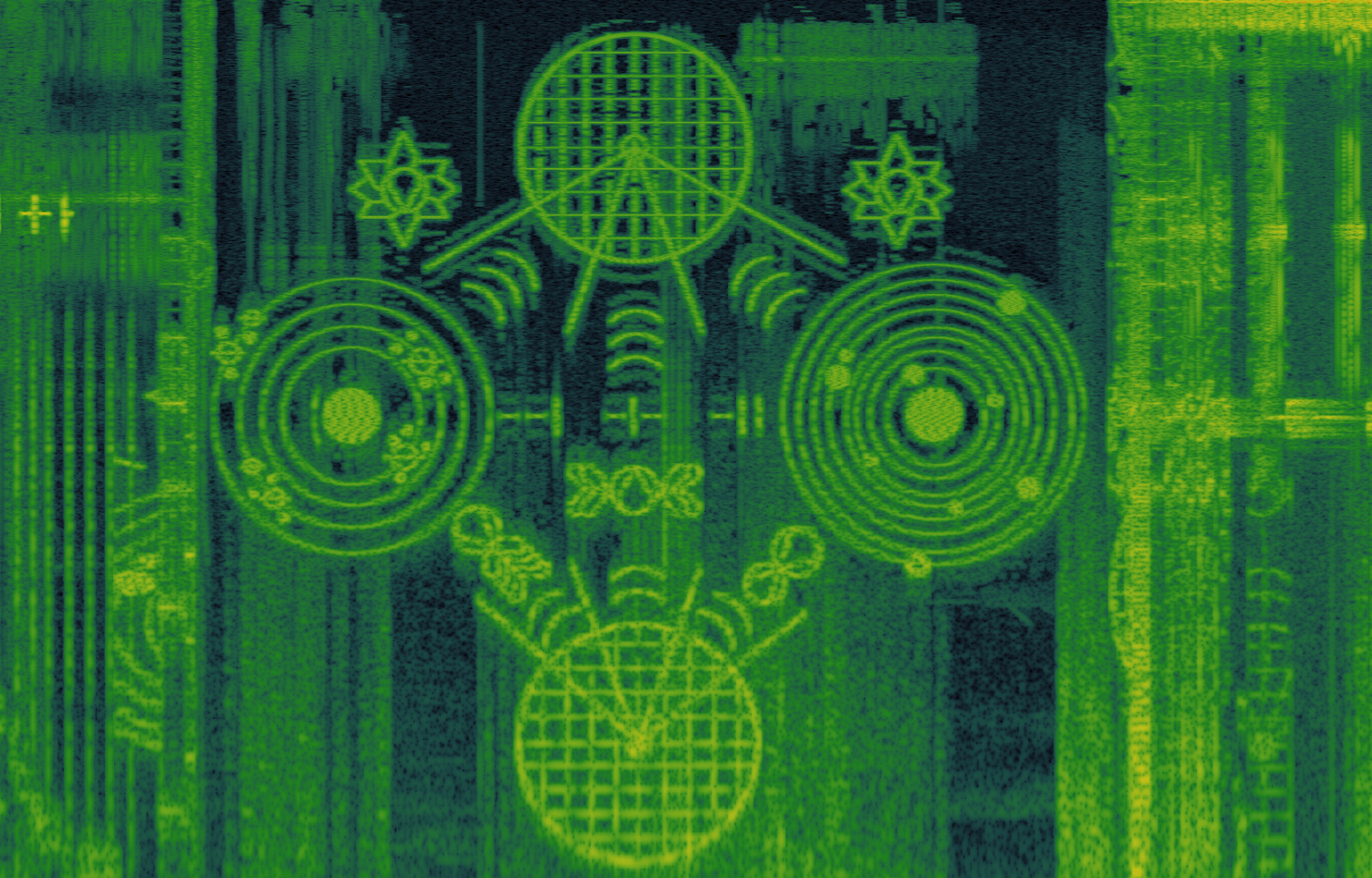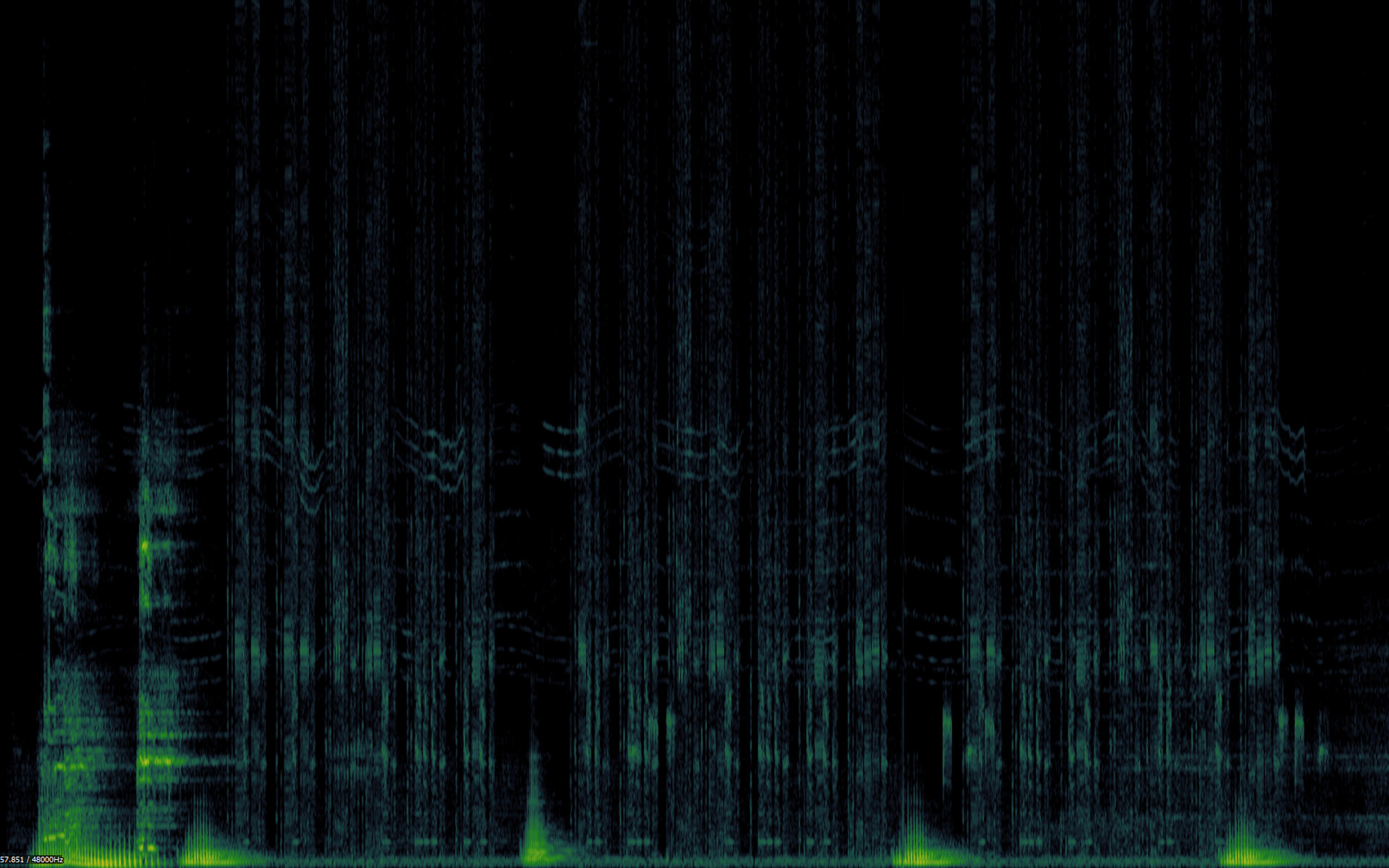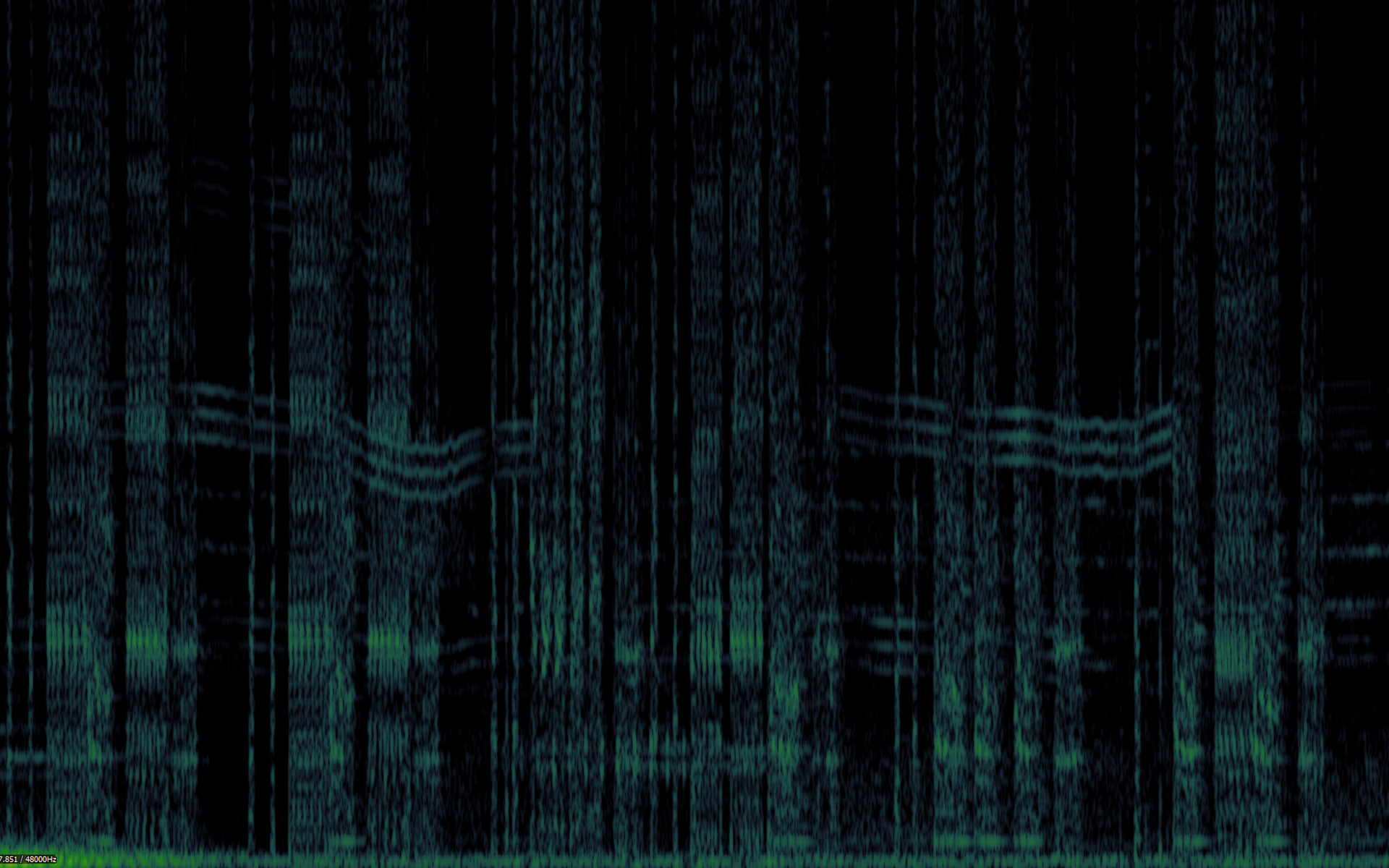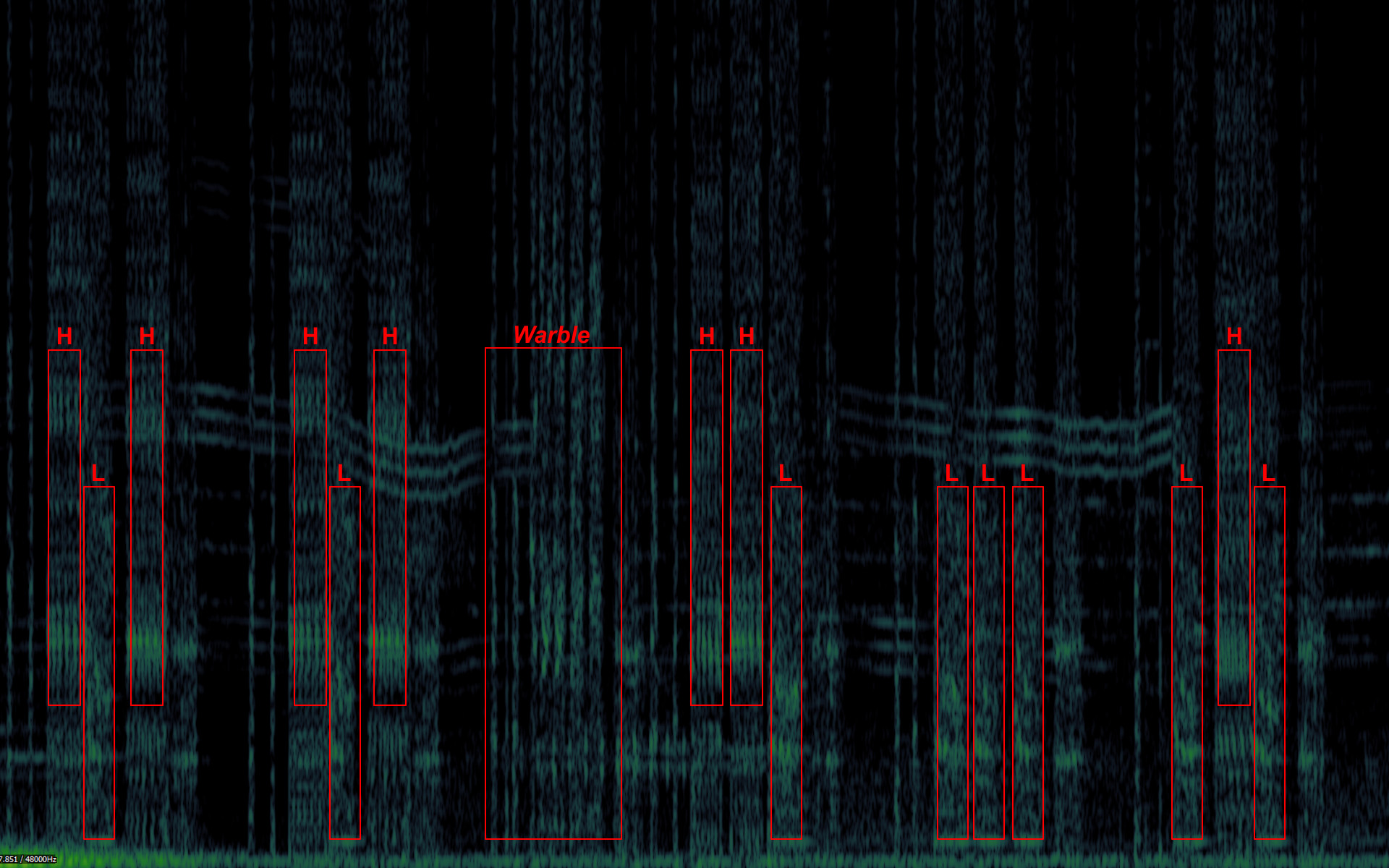Decoding the Thargoid Devices
07 Jan 2018Robert Phillips
I had acquired a Thargoid Link, and I knew it reacted to the audio stream I had received from the Thargoid Machine at HIP 14909 2 A. I wanted to understand that reaction better to see where it would lead.The Millennium Dustbin was getting a bit cumbersome, so I moved back into The Purple Ranger and transferred my Thargoid cargo into it. It was more lightly armoured, but was faster, more manoeuvrable, and had a higher jump range.
I headed into deep space, to eliminate any unnecessary sounds from my analysis, and jettisoned one of the Thargoid Links in my hold.
It floated there without any particular purpose or action. I positioned myself as close to the Thargoid Link as I could get, in front of the 'dish'. In an Asp Explorer I could get as close to 30 metres before it bounced off my shields.
I re-played the first message I had received from the Thargoid Machine. The garbled sound played just as it did before. A couple of seconds after the audio transmission had finished playing, the Thargoid Link glowed blue/white and responded with an audio transmission of it's own:

The Thargoid Link's response was equally garbled at first, but then I noticed a pattern of high/low beeps before the Thargoid Link eventually fell silent and reverted to it's dormant state.
(NOTE: You have to be directly in front of the dish to hear the beeps. Facing the dish at even a slight angle will render them inaudible.)
The sounds it responded with were too faint and too quick to analyse, so I setup an audio recorder and retried the playback. The response was the same, but this time I had captured an audio recording of the transmission and response.
As a waveform, the audio recording showed nothing out of the ordinary. However, as soon as I ran a spectrographic analysis, some interesting details emerged.
The audio transmission from the Thargoid Machine contained an encoded image:

A cleaned up version of this image looked like this:

There were several notable things in this image:
- The lower quadrant displayed a Thargoid Sensor, Thargoid Link, and Thargoid Probe working together, just like they did in the Thargoid Machine, and seemed to point to some star systems.
- The left-hand quadrant showed what appeared to be a system map, being pointed at by a Thargoid Sensor.
- Jettisoning the Thargoid Sensor and leaving it to float in deep space causes it to align itself to point to Merope. The system map in this image is identical to the layout of Merope.
- The right-hand quadrant showed a Thargoid Probe pointing to the system map of an unknown star system.
- Previous analysis of the Thargoid Probe by the Cannon Science Group have determined this probe always contains a distance measure to Col 70 Sector FY-N C21-3.
- The central quadrant showed the Thargoid Link pointing to what appeared to be a binary representation of octal numbers: 001 (1), 010 (2), and 011 (3).
- We know the Thargoids feature 8 sides - it seems likely they have evolved to use an Octal (base-8) numbering system too, just as we humans evolved to use a Decimal (base-10) numbering system to match the number of digits on our hands.
- The upper quadrant showed a shape similar to the lower quadrant.
- If the lower quadrant was intended to represent the source of the audio signals I received, then perhaps the upper quadrant meant something similar.
- Either side of the upper quadrant were what appeared to be some Thargoids.
Overall, this image seemed to suggest that these 3 Thargoid devices could be used together in some way to do…something!
I analysed the response from the Thargoid Link to my first audio message, again using a spectrographic analysis.
The response from the Thargoid Link had 3 distinct sets of high/low beeps:

I took a closer look at the first set:

The spectrogram allows for a visual identification of the high-low beeps. In the case of each set there was a series of high/low beeps separated by some kind of warble:

Prior research by the Canonn Science Group showed that these high/low beeps represented binary numbers (High = 0, Low = 1), and the warble was a division ('/'). That meant the response to each audio message contained 3 sets of fractions.
So, in my example above, the 1st set of beeps could be represented as:
HLH HLH / HHL LLL LHL
= 010010 / 001111101
= 18 / 125
= 0.144
I could repeat this for the 2nd set:
HLL LLL / HHL LLL LHL HHH
= 011111 / 001111101000
= 31 / 1,000
= 0.031
…and the 3rd set:
HLH LLL LHL / HLL HHL HHH
= 010111101 / 011001000
= 189 / 200
= 0.945
So, now I had 3 decimal numbers from my first audio message:
- 0.144
- 0.031
- 0.945
Cannon have theorised that each of these numbers represented a fraction of a unit of distance from 3 reference systems. Their analysis suggested:
- The unit of distance was the same as discovered by the Thargoid Probe: 871.018 Ly (distance between Merope and Col 70 Sector FY-N C21-3).
- Reference 1 was always Merope.
- Reference 2 was always the source of the audio message (in this case, HIP 14909).
- Reference 3 was always Col 70 Sector FY-N C21-3.
This meant my 3 numbers could be used to find a system that was:
- 0.144 * 871.018 = 125.4266 LY from Merope.
- 0.031 * 871.018 = 27.0016 LY from HIP 14909.
- 0.945 * 871.018 = 823.112 LY from Col 70 Sector FY-N C21-3.
I checked out the galaxy map to see if I could triangulate some candidates. The best match was Mel 22 Sector NX-U D2-31 (125.22 LY from Merope, 26.97 LY from HIP 14909, and 823.40 LY from Col 70 Sector FY-N C21-3).
I laid in a course, and engaged my hyperdrive…
